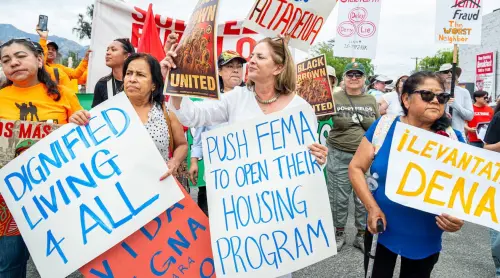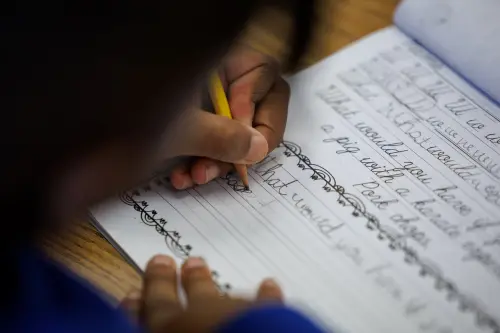While the coronavirus may be a global pandemic, the public health crisis has revealed the critical role of local news outlets currently working tirelessly to cover the impact of the coronavirus on their communities. These outlets have helped to disseminate essential information from state and local government actors, prevent the spread of misinformation, and report important community stories from the effects on the local economy to a food pantry trying to meet a surge in demand as workers lose their jobs and income.
But some communities in the U.S. lack a local outlet that can tell these stories and provide details about the area’s COVID-19 cases, school and business closures, and other vital news. At the same time, in communities that do have a local news outlet to turn to, local newsrooms have been hit by a severe and sudden decline in revenue, forcing employee lay-offs and furloughs as well as cuts to staff hours and pay. While the COVID-19 pandemic underscores the critical need for local journalism, it threatens its provision.
Amid the public health crisis, many communities across the U.S. suffer from a lack of local reporting. Of the 2,485 U.S. counties that reported COVID-19 cases as of April 6th, 50% are news deserts (home to only one local newspaper or none at all). Fifty-seven percent of counties that have reported cases of COVID-19 lack a daily newspaper and 37% saw local newspapers disappear between 2004 and 2019.[1] It is impossible to know what will not be told in the communities that have seen local newspapers disappear in recent years, but undoubtedly, important stories will go uncovered as the coronavirus spreads across the country.
While the coronavirus has so far hit cities the hardest, it has already expanded into more rural parts of the country which have been the worst impacted by the local news crisis. Of the U.S. counties without a daily or weekly newspaper, 68% are located outside of the country’s metropolitan areas. These rural parts of the country have also seen a decline in the number of hospital beds in recent years. These two trends leave less densely populated communities both without the healthcare infrastructure necessary to adequately confront the coronavirus and the high-quality local journalism to report the consequences.
And some communities may be particularly vulnerable as a result of insufficient news coverage. A study from the Democracy Fund finds that since 1998, about 500 media sources that once served Indian Country have disappeared. This further threatens tribal communities, who receive health care from the underfunded, struggling Indian Health Service. Meanwhile, news organizations that offer information in other languages can play a critical role in helping communities in the U.S. whose first language is not English stay informed during the coronavirus outbreak. Only recently did the Centers for Disease Control and Prevention release its coronavirus guide in Spanish following pressure from Latino groups.
While the country’s news deserts confront a unique threat in the wake of the coronavirus, many places in the U.S. do have plenty of local reporters and news organizations working hard to cover the impact of COVID-19 in their communities. Local newsrooms across the country, however, are suffering from a dramatic loss in advertising revenue in recent weeks.
Many advertisers do not want their advertisements to appear next to stories about COVID-19 and have blocked their ads from appearing on any webpages containing the word “coronavirus.” At the same time, many businesses that are newly cash-strapped in the wake of the coronavirus as the result of event cancellations, mandated closures, and a drop in consumer demand cannot afford to spend money on advertising. This is a particular problem for the nation’s alt-weekly newspapers that depend on advertising revenue from the types of businesses hit hardest by social distancing measures such as concert venues, bars, and restaurants, businesses which also serve as their main points of distribution.
As a result, local newsrooms across the country have laid off reporters in the wake of the coronavirus. The Stranger, Seattle’s alt-weekly, temporarily laid off 18 employees and suspended print production. D.C.’s Washingtonian Magazine recently laid off its fellows and cut pay for its remaining staff. Layoffs have also hit the Pulitzer-Prize-winning Charleston Gazette-Mail in West Virginia. In the face of falling advertising revenue, The Durango Herald laid off five employees in its news and advertising departments. Confronting a steep fall in advertising revenue, Gannett has decided to furlough employees at more than 100 newspapers. The Times-Picayune and Advocate in New Orleans has furloughed about a tenth of its staff and instituted four-day workweeks. This pattern is mirrored at local news organizations across the country.
Newsrooms may be taking a temporary hit to their advertising revenue in the wake of the coronavirus, but a looming economic recession could mean more layoffs and closures in an industry already struggling. During the last recession, local newspapers, along with industries across the economy, suffered steep job losses, but even as the nation’s economy recovered, the nation’s newspapers continued to shed jobs. Between 2008 and 2018, newspapers saw a 47% drop in employment. During recessions, advertising spending tends to decrease faster than overall spending, making newspapers particularly vulnerable to the broader conditions of the economy. Between 2008 and 2018, the newspaper industry saw a 68% decline in advertising revenue.
The growth of non-profit local journalism in recent years offers a bright spot. For instance, the nonprofit website Georgia Health News is providing coverage of coronavirus in a state where 29 out of 166 counties do not have any local newspaper. Other nonprofit news organizations across the country are also providing consistent coverage of the coronavirus in their communities. But, as The Washington Post media columnist Margaret Sullivan writes, “while, thankfully, some of the slack is being taken up by newer nonprofit newsrooms, by public radio and by local television stations, it’s simply not enough. We didn’t need a pandemic to tell us that, but it makes the reality that much more clear.”
Before the coronavirus hit the U.S., Congress held an inaugural hearing as part of its antitrust investigation into internet giants focused on the impact of digital media on the news industry. At this hearing, Jerry Nadler (D-N.Y.) declared that “the news media once again faces serious threats and congressional action once again may be required.” Congress’s stimulus package will help businesses across the country struggling from the economic fall-out that has resulted from the global pandemic. Lawmakers should also consider offering financial relief to the nation’s newsrooms. The coronavirus has only underscored the critical role local news outlets play in their communities.
Note: This post has been updated to correct the number of counties with COVID-19 cases and the number of cases with unknown county locations.
The author is grateful for the excellent research assistance and editorial support provided by Roma Venkateswaran.
[1] Author’s analysis of data from UNC’s Center for Innovation and Sustainability in Local Media’s Database of Newspapers. NOTE: As of April 6, there were 700,550 known cases of COVID-19 in the U.S. whose county information is not publicly available.
The Brookings Institution is committed to quality, independence, and impact.
We are supported by a diverse array of funders. In line with our values and policies, each Brookings publication represents the sole views of its author(s).





Commentary
Critical in a public health crisis, COVID-19 has hit local newsrooms hard
April 8, 2020